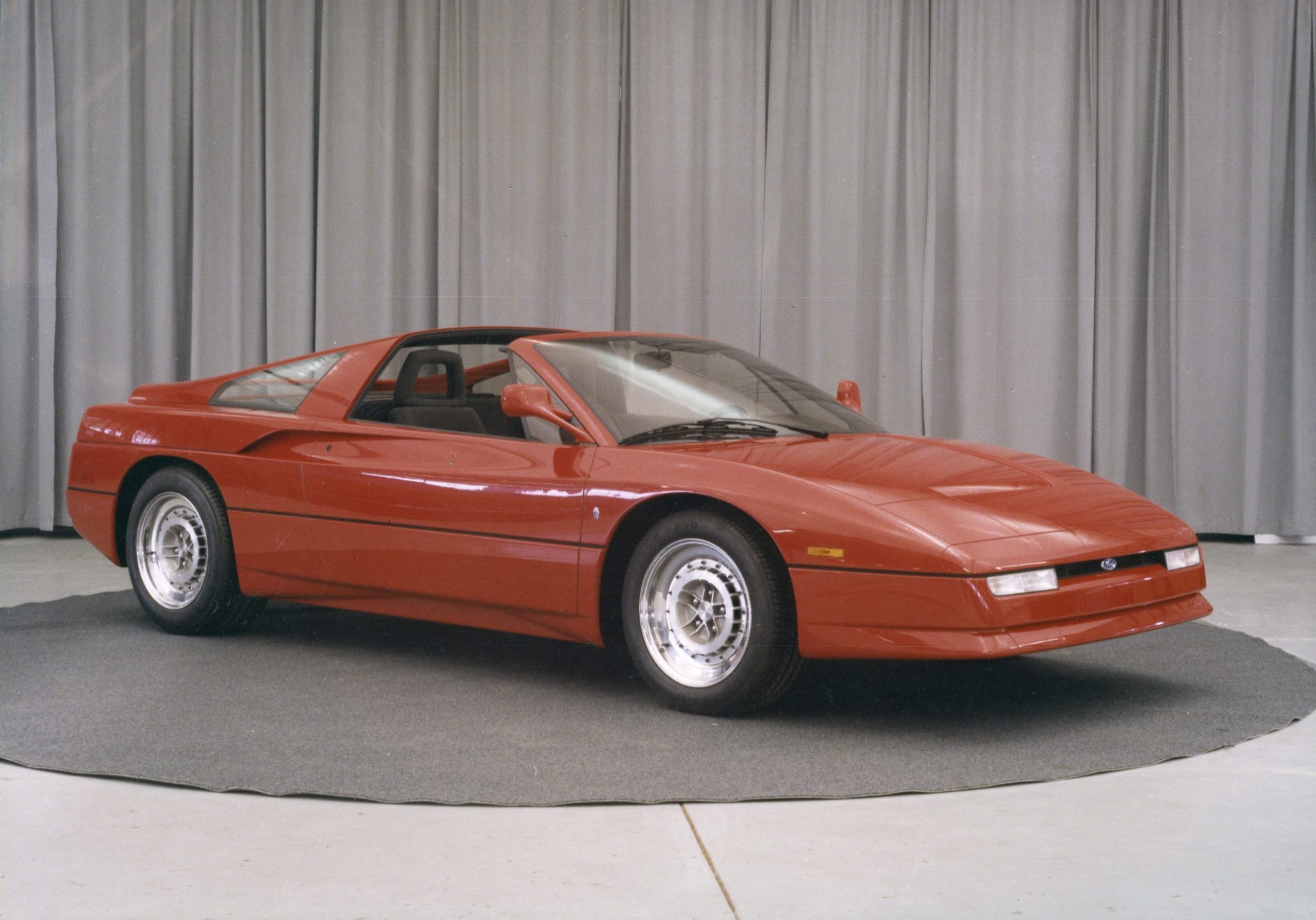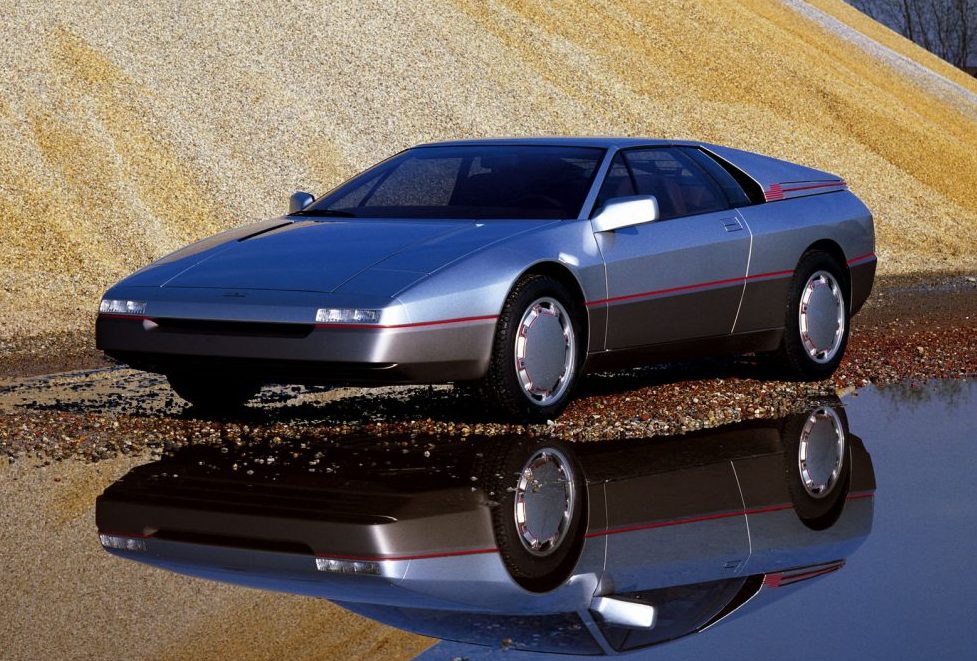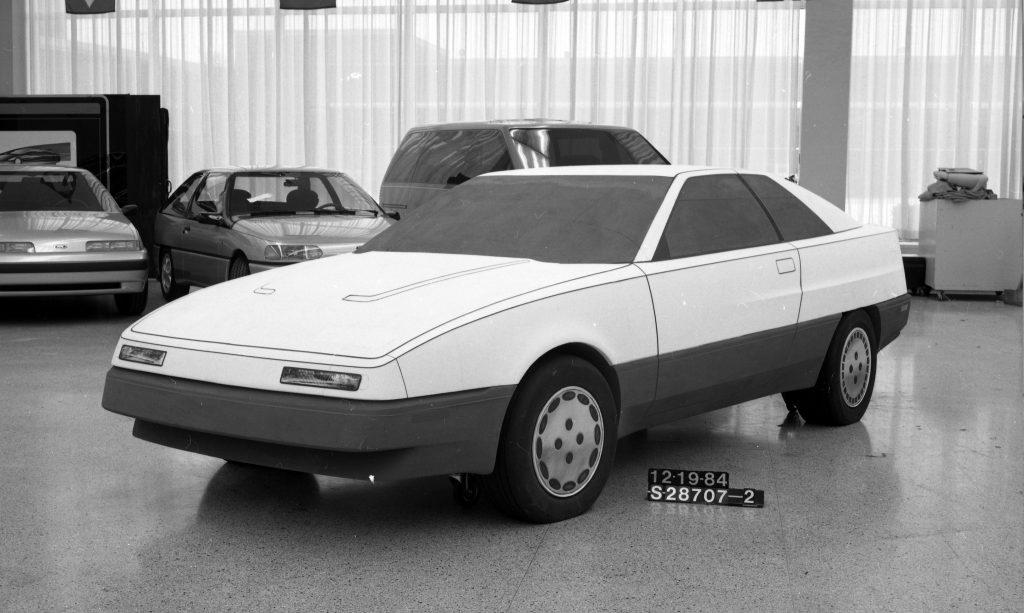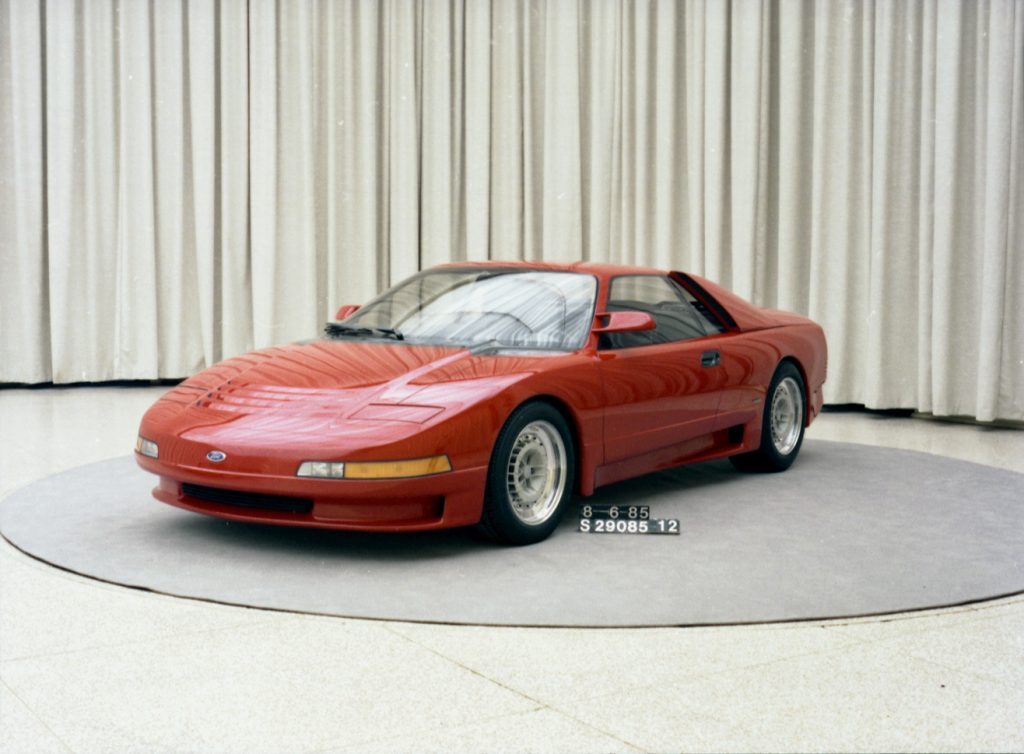Based on Steve Saxty's story published on Hagerty UK
- Racing Legacy: The iconic Ford GT40’s legacy in the 1960s set the stage for the ambitious GN34 project, marking a pivotal moment for the American giant to reclaim its dominance on both the tracks and the streets.
- SVO Dream Team: Meet the passionate Special Vehicle Operations (SVO) team led by Mike Kranefuss, whose racing background propelled them to challenge Ford's corporate culture and envision a mid-engined supercar to rival Ferrari, blending American inspiration with international expertise.
- Design Showdown: The intense design battle between Ford's in-house Advanced Design team, Ghia studio in Turin, and Italdesign for the GN34’s visual identity not only shaped the car's aesthetics but also reflected the intricate dynamics within Ford during this high-stakes period.
- Financial Realities: Unforeseen financial challenges led to the ultimate demise of GN34 in the mid-1980s. Explore the tough decision-making process as Ford executives grapple with the devaluation of the dollar, opting for a safer bet with the Explorer SUV and leaving the dream of challenging Ferrari temporarily unfulfilled.
In the vibrant landscape of the automotive industry during the 1980s, Ford found itself standing at the crossroads of innovation and challenge. While the iconic Ford GT40 had left an indelible mark in the 1960s by dominating the tracks, two decades later, the American giant faced a familiar challenge.
Ferrari and Porsche had surged ahead in the sales race for high-performance sports cars, leaving Ford seemingly without a corresponding champion. Yet, behind the scenes, a clandestine endeavor was unfolding within Ford's corridors. A team of astute product planners and engineers, recognizing the burgeoning demand for sports cars and luxury models, sought to defy the status quo.
The early '80s marked the inception of Ford's contemplation on entering the sports car market with a Ferrari rival at a more accessible price point. This is the true story of what really happened, as told by former industry executive and author Steve Saxty.
See also: The Evolution of Mercedes-Benz: A Look Back At The First Model
The SVO Dream Team

By the end of October 1983, Ford had an ink-an-paper plan outlining the vision for a world-class supercar. This ambitious project aimed not only to challenge the Blue Oval’s prevailing corporate culture focused on mass-market vehicles but also to cater to the growing segment of buyers willing to splurge on high-end sports cars.
Ford's gaze turned toward its Special Vehicle Operations group (SVO), a cohort akin to the British Special Vehicle Engineering group. Under the leadership of Mike Kranefuss, a seasoned competitions manager with a racing background, SVO boasted a team of 30 Detroit engineers, planners, and marketers.
This group had previously demonstrated its mettle with the creation of the acclaimed Mustang SVO, proving that they could outpace the traditional engineering juggernaut within Ford.
The SVO team, of which each member shared in the same passion and dream of building a car with the power of a Ferrari and the price of a Ford, eagerly embraced the challenge presented by the supercar project, now codenamed GN34.
This formidable endeavor aimed to birth a Ferrari rival that could be priced competitively against the likes of the Corvette and Porsche 944. Mike Kranefuss, Glen Lyall, the Chief Engineer, and Ronald Muccioli, the Planning/Program Manager, formed the core of this dynamic team, injecting an air of excitement and determination into the project.
"For us, it was more than a job and another product; it was our dream," reflected Kranefuss, encapsulating the spirit that fueled SVO's commitment to crafting a supercar that would redefine Ford's presence in the sports car arena. The stage was set for an audacious journey that would not only challenge industry norms but also etch the legacy of Ford's GN34 in the annals of automotive history.
The GN34 Project

Faced with the challenge of surpassing Ford's Corvette and competing with the finesse of Italian supercars, Muccioli and his visionary product planner, Tom Smart, embarked on a quest to bring the GN34 to life.
The ambitious endeavor required a mid-engined platform and an aesthetically pleasing design that could rival the elegance synonymous with Italian automotive craftsmanship. To build the fastest Ford since the GT40, Muccioli and Smart honed in on two pivotal aspects: crafting a sleek body and developing a cutting-edge, high-performance engine.
The engine selection process presented its own set of challenges. While SVO explored a potential collaboration with Lotus for the next Esprit, the lack of defined plans from Hethel left the endeavor in uncertainty.
Within Ford's repertoire, the Sierra Cosworth engine emerged as a contender, but its cost and the harshness of its four-cylinder turbo made it less appealing for a V8 Ferrari enthusiast. Ford's upcoming modular V8 showed promise but lay too distant in the future.
External options like Porsche's V8 were dismissed on the grounds of cost. The beacon of hope was Ford's still-in-the-works Super High Output quad-cam V6, crafted in partnership with Yamaha for the high-performance Taurus SHO model.
Its 3-liter capacity could be expanded as needed, and its sophisticated design offered a compelling alternative to a traditional V8. Fortune smiled upon SVO as the decision was made: the Yamaha-Ford motor, among the most advanced V6 engines of its time, would power the GN34. Only Honda's V6 VTEC motor in the later NSX would eventually surpass this mill.
See also: Top 10 Road-Going Highest Horsepower Cars For Rich People
The Italian Job

1984 Italdesign Maya
In the blooming spring of 1984, attention shifted to the GN34’s styling—a daunting task. None of Ford's factories were equipped to manufacture 20,000 specialized mid-engined cars annually.
So, Muccioli and Smart set their sights on Europe, the heartland of supercar suppliers and specialist manufacturers. Thus, the stage was set for a transatlantic collaboration that would redefine Ford's presence in the global sports car market.
In the intricate dance of partnerships and potential collaborators, Heuliez, the French coachbuilder, expressed interest and even provided speculative sketches. However, it was upon landing in Turin and visiting Italdesign that the SVO team realized they had found a promising ally.
The famous Giorgetto Giugiaro's company didn’t just have the expertise to style the GN34 but also had the capability to handle the intricate body engineering essential for production by a third party, be it Heuliez or the team’s preferred choice, Chausson in France.
Fortuitously, the timing coincided with Italdesign's initiation of work on a show vehicle named Maya, reminiscent of the Esprit. Sensing an opportunity, in March '84, Italdesign proposed a shrewd collaboration: SVO could contribute a Ford V6, for a substantial sum, to power the Maya show car.
This ingenious move jump-started the GN34 project, infusing it with the credibility of one of the world's premier designers. In return, Italdesign secured a new client and aspired to clinch a lucrative design and body engineering contract.
A Family Affair

Italdesign GN34 mockup based on the Ford Sierra.
As the GN34 project gathered momentum, unforeseen challenges were on the horizon. In July 1984, SVO presented its initial proposals to Don Petersen, Ford's CEO, and other senior executives.
The product planners had meticulously calculated a significant profit, but the bombshell dropped by Stuart Frey, Vice President of Car Product Development, reverberated through the room.
Frey, a Ford veteran, expressed deep reservations about engineering a vehicle with external suppliers, especially one targeting millionaires and sold through Ford dealers. His concerns spanned warranty, quality, safety, and the potential for cost overruns, deeming GN34 too colossal a risk.
Ronald Muccioli, the Planning and Program Manager for GN34, recounted the meeting, emphasizing Frey's skepticism about a handful of car enthusiasts successfully bringing the project to fruition. Frey's directive was clear: explore cheaper alternatives.
In a strategic pivot, SVO assessed the Sierra, a vehicle of the right size with commendable handling and modest success as the XR4Ti in North America. To shield GN34 from devolving into a mere re-bodied family saloon car, Italdesign hastily constructed a full-sized foam model using Sierra hard points.
However, internal politics surfaced as Ford's in-house Advanced Design group vied for the opportunity to design the flagship supercar. Rather than engage in a futile battle, Muccioli and Smart astutely approached Advanced Design with a proposal based on a highly modified Sierra platform.
This proposal positioned the SHO V6 low in the chassis, presenting a third option alongside the mid-engined Maya and Italdesign's Sierra-derived foam model. The stage was set for an intricate negotiation that would determine the fate of GN34 and the direction of Ford's foray into the realm of high-performance supercars.
See also: Here Are 20 Of The Rarest Cars The World Has Ever Seen
The Unexpected Green Light

Amidst the high-stakes decision-making, SVO invested five months in crafting three distinct concepts labeled Alternative 1, 2, and 3. These alternatives, benchmarked against a sporty BMW, a Porsche 944, and a Ferrari, included two Sierra-based options and the Maya show car.
In December 1984, the trio of GN34 alternatives stood side by side. To everyone's surprise, SVO got the green light to proceed with a mid-engined challenger against the Ferrari 308/328.
However, SVO tempered its celebration with cautiousness as the team only had 10 months to return with a finished design for Program Approval, a pivotal juncture where Ford's financial commitment to supplier tooling begins.
The program was back on track, but the clock was ticking, demanding relentless effort from SVO throughout 1985 to ensure GN34 could grace the roads by 1989.
Italdesign's involvement extended beyond styling; they constructed a prototype named Maya EM (M for Muletto), embodying a simplified Maya body over meticulously engineered mechanicals.
In September 1985, the prototype underwent evaluation by Jackie Stewart, the legendary three-time Formula One World Champion. The outcome was overwhelmingly positive—against rivals like the Porsche 944, Ferrari 308, and Corvette ZR1, the prototype demonstrated competitive speed and superior comfort, two crucial factors for America’s uneven terrain.
The Design Showdown

Ford International GN34 design proposal
The GN34’s design battle loomed large even as the mechanical layout took shape. Italdesign produced another full-sized model, the Maya II ES (styling), a refined iteration with a Germanic purity of line and an Italian exotic profile.
However, competition emerged from within Ford as the rest of the company became aware of the GN34 project. Don Kopka, Ford Design VP, directed the Detroit-based Advanced Design team to submit their proposal, while another submission came from the Ghia studio in Turin.
Now, four GN34 contenders stood ready for scrutiny—the Muletto and three styling proposals from Italdesign, Ghia, and Advanced Design. Ford's expansive design showroom looked like an automotive battleground as two survivors of the four proposals were chosen for market research testing.
Italdesign’s Maya II ES design succumbed, leaving the Lamborghini-inspired Detroit proposal to face off against Ghia's submission, radiating the glamour reminiscent of a Ferrari 308.
The stage was set for a design showdown that would determine the visual identity of the GN34 and shape Ford's ambitious foray into the realm of high-performance supercars.
The Sad Fall Of GN34, The Fastest Ford That Never Was

The saga of GN34 reached a pivotal moment in late 1985 as Ford's market research team orchestrated customer clinics in Los Angeles. It was a make-or-break moment for the new supercar.
The relief within the SVO team was palpable when feedback indicated that Ferrari, Corvette, and Porsche owners not only adored Ghia's slinky design but also estimated its cost to be on par with a Ferrari.
Even after the secret car's identity as a Ford was revealed, the respondents still assumed it would be priced above the intended 944/Corvette range.
With a positive reception and seemingly strong market potential, the project was greenlit for further development. Additional prototypes, including an Escort-based mule with a Super High Output (SHO) V6 and two modified de Tomaso Pantera with SHO V6 and tuned V8 configurations, marked the international collaboration at the heart of this ambitious supercar.
Sadly, just as GN34 stood on the brink of production, a significant hurdle emerged. In July 1986, the devaluation of the American dollar against the French franc by 20 percent suddenly made the car's profitability precarious.
Ford's executives faced a pivotal decision: pursue the risky supercar with a potential global market or invest in a more traditional Ford product with mass appeal.
Ironically, it was industry veteran Bob Lutz, leading the Ford Truck Division, who played a decisive role in the GN34’s demise. Proposing a four-door Bronco, he championed the concept of a Sport Utility Vehicle with the promise of substantial sales volume.
The company’s number crunchers favored the Explorer, and SVO's dream of challenging Ferrari once again was shattered. The GN34 project got axed, and Ford shifted its focus to the Explorer, riding a wave of profitability through the '90s.